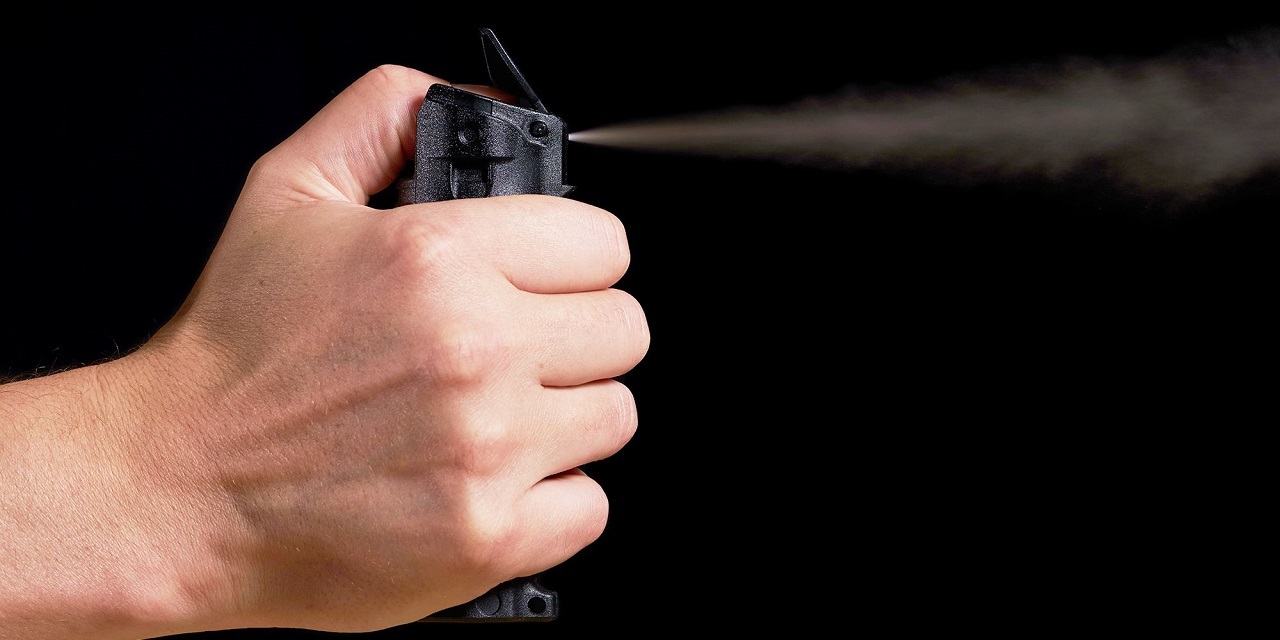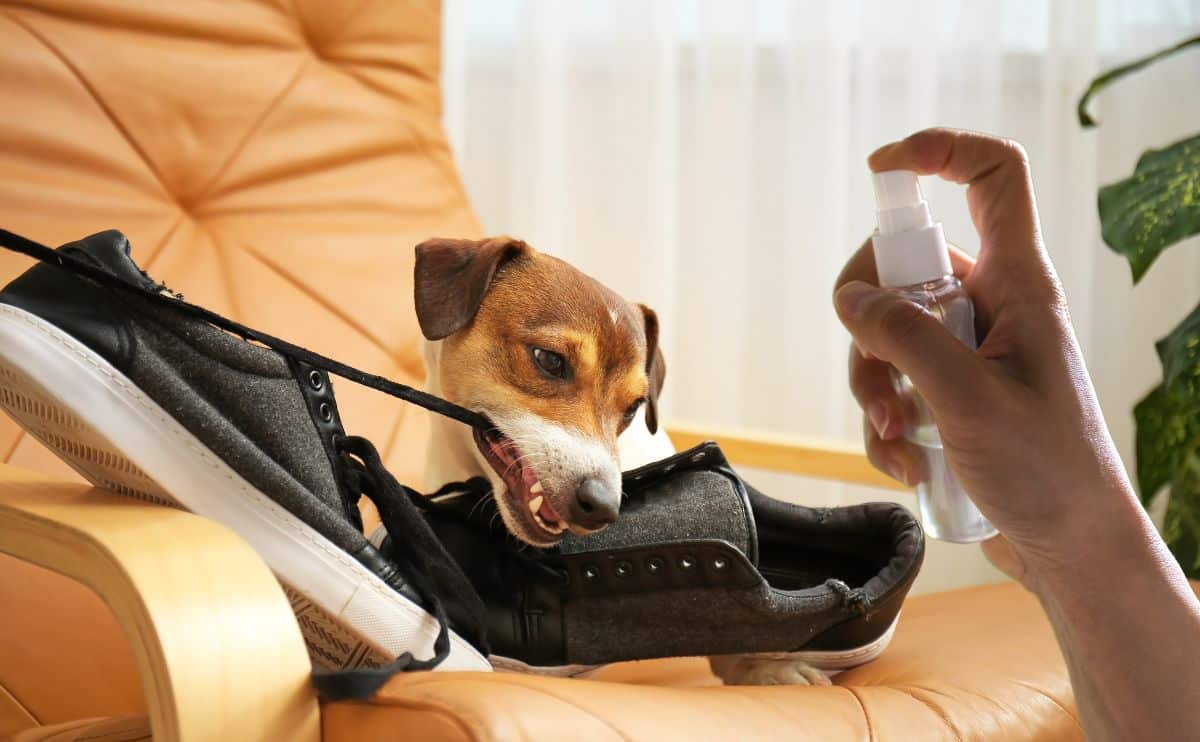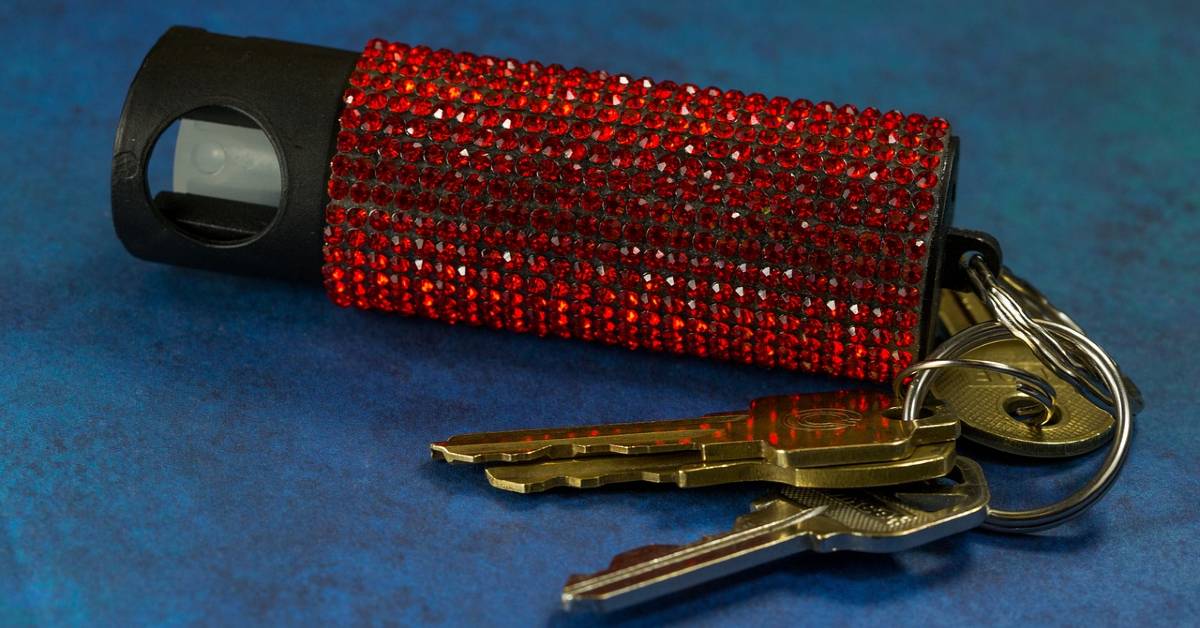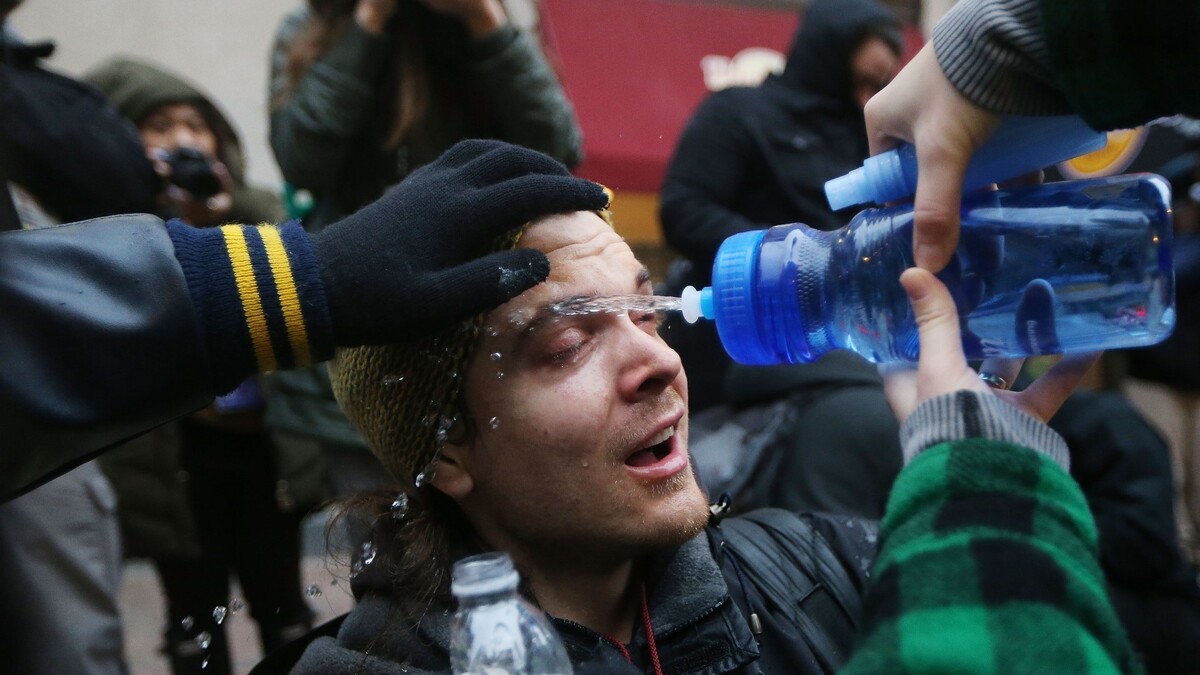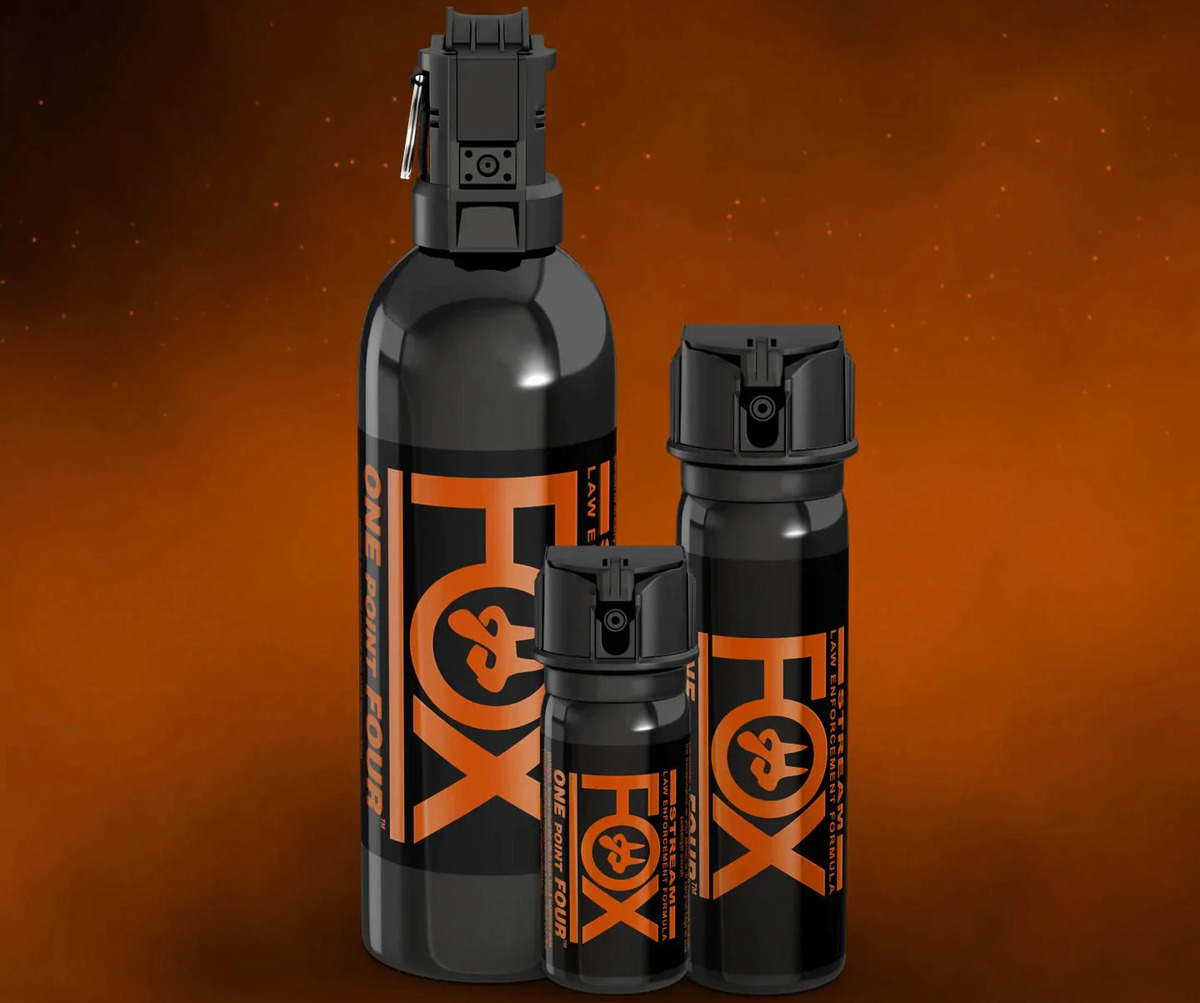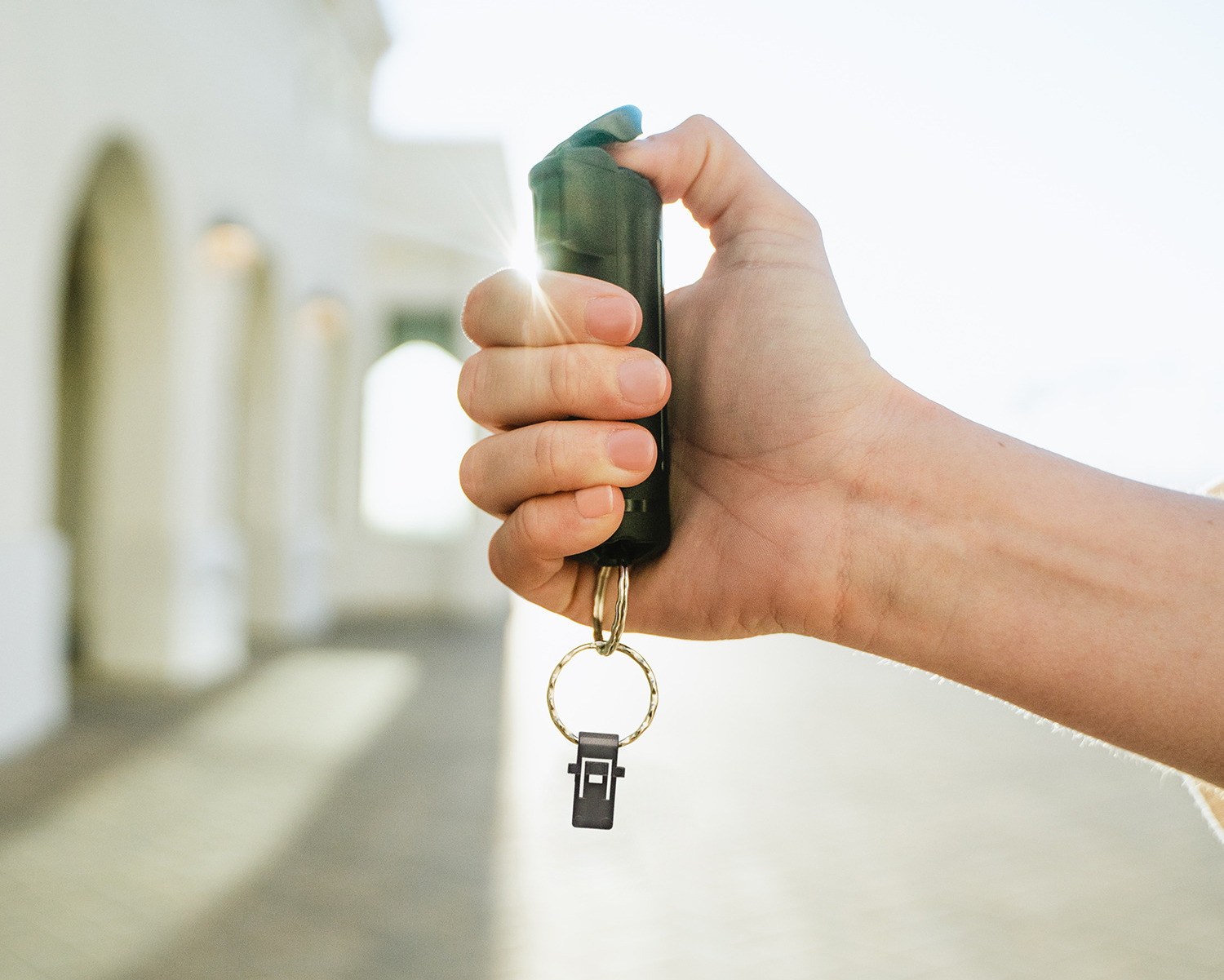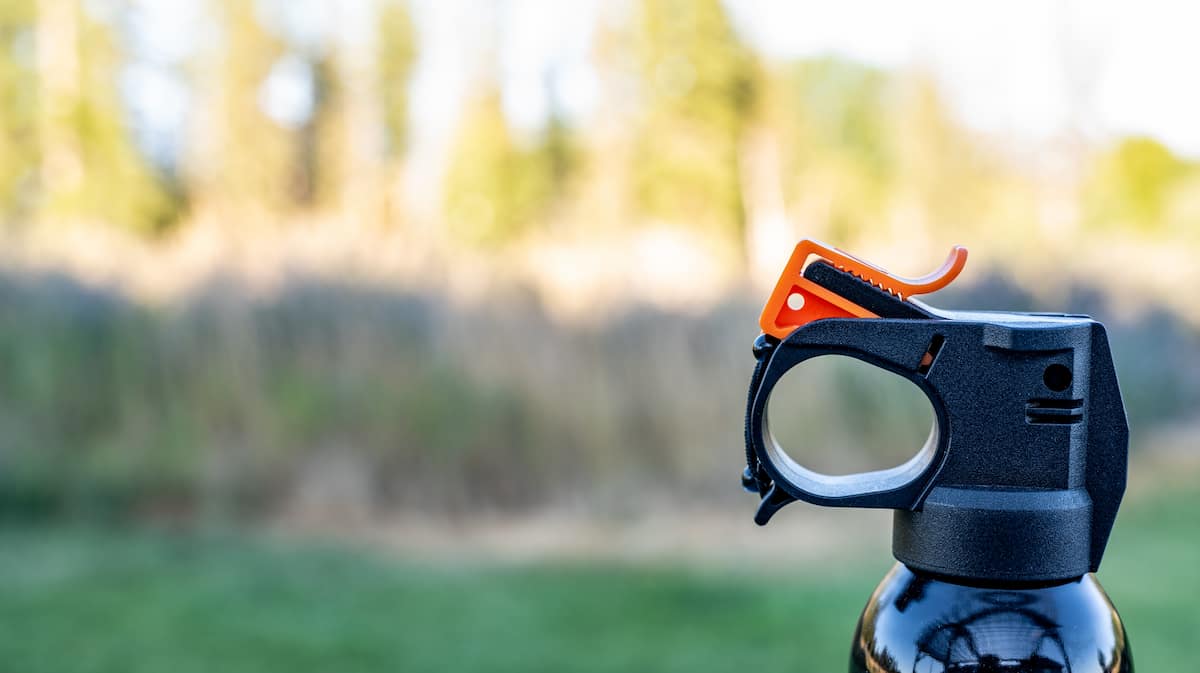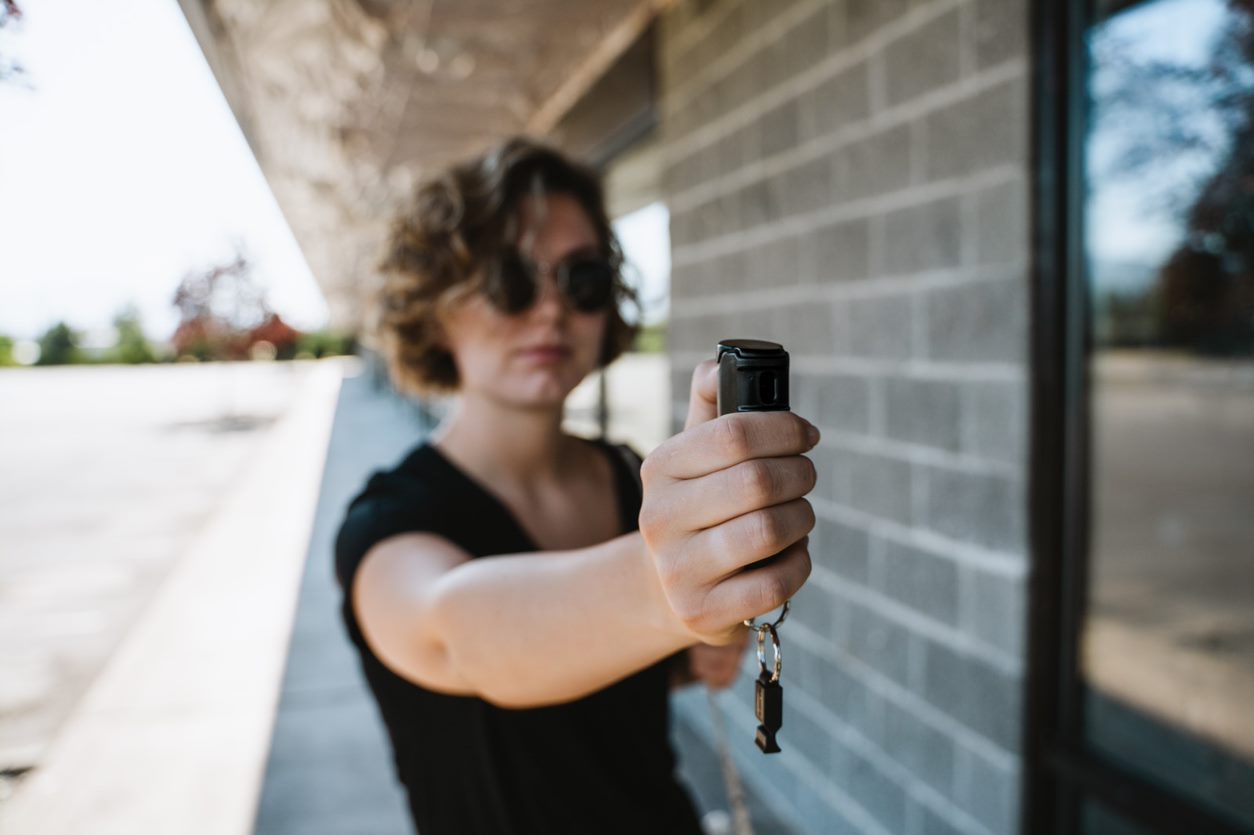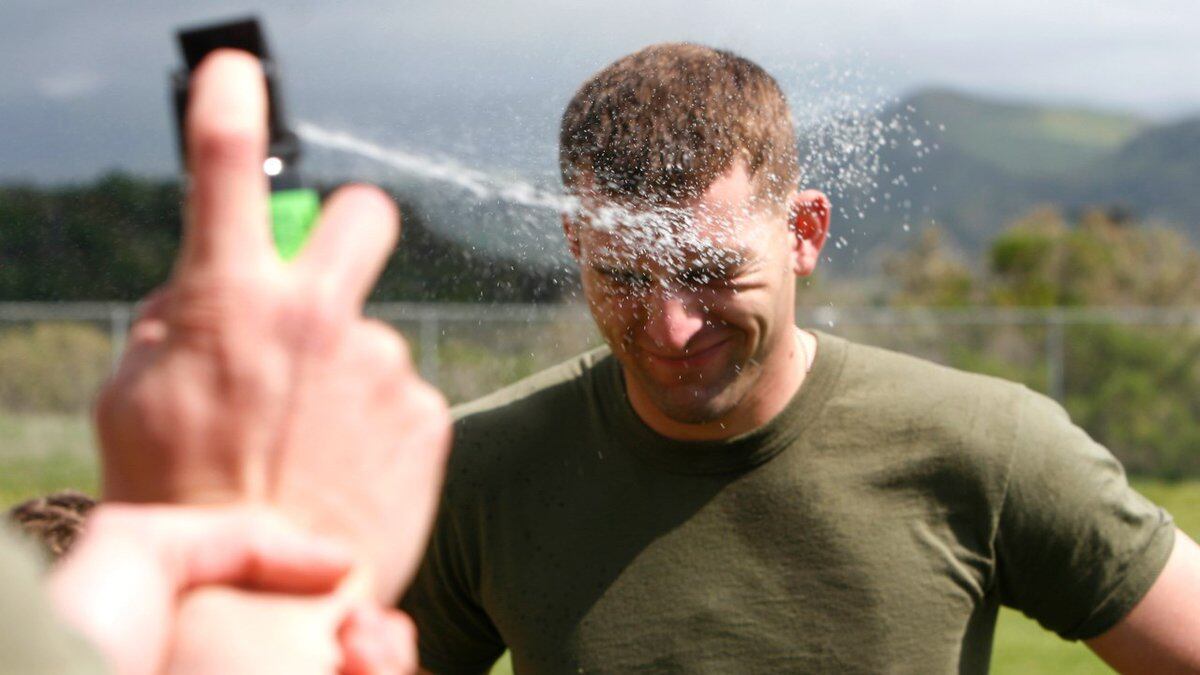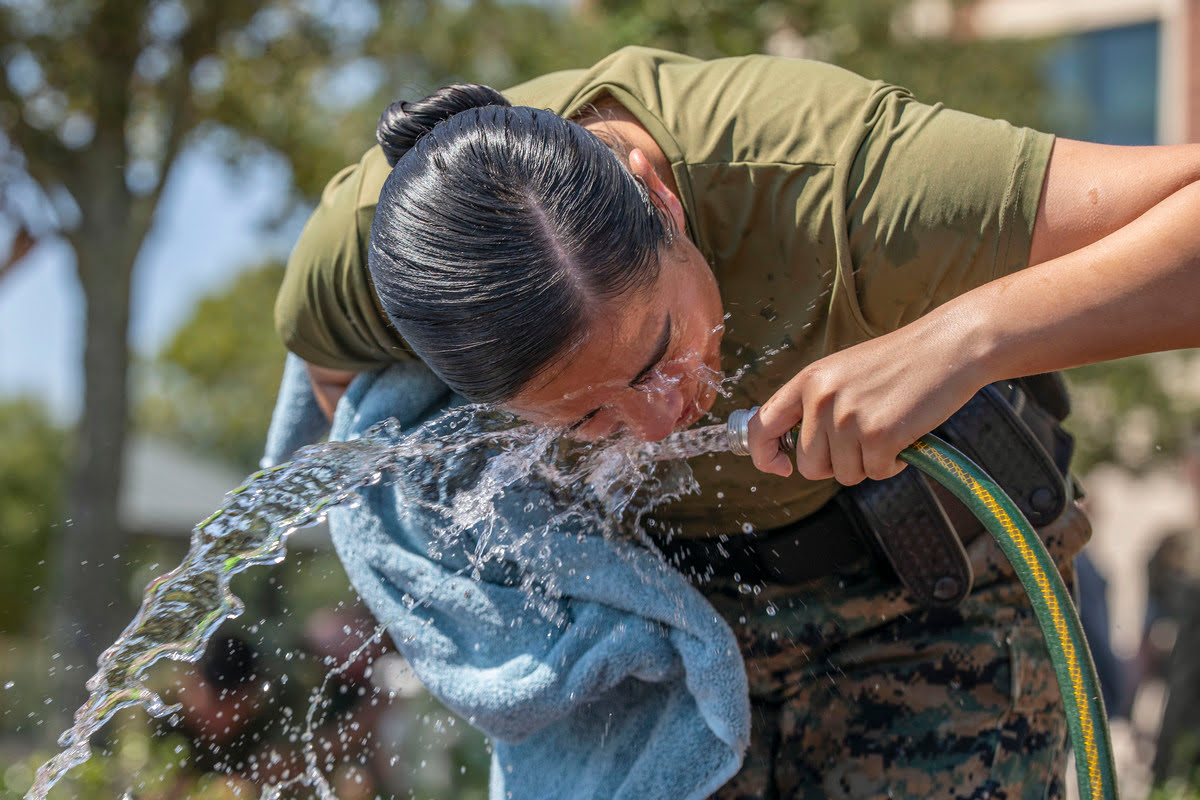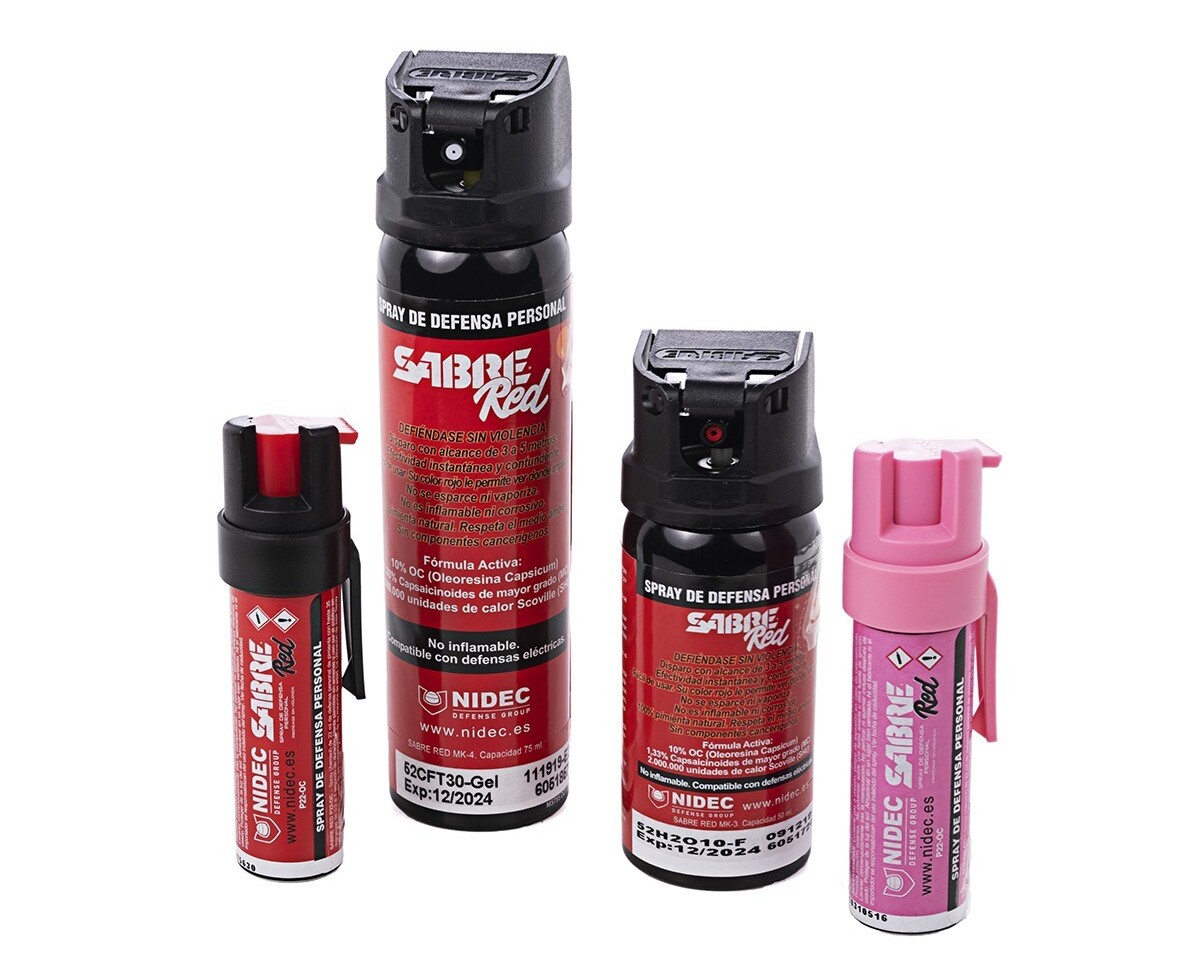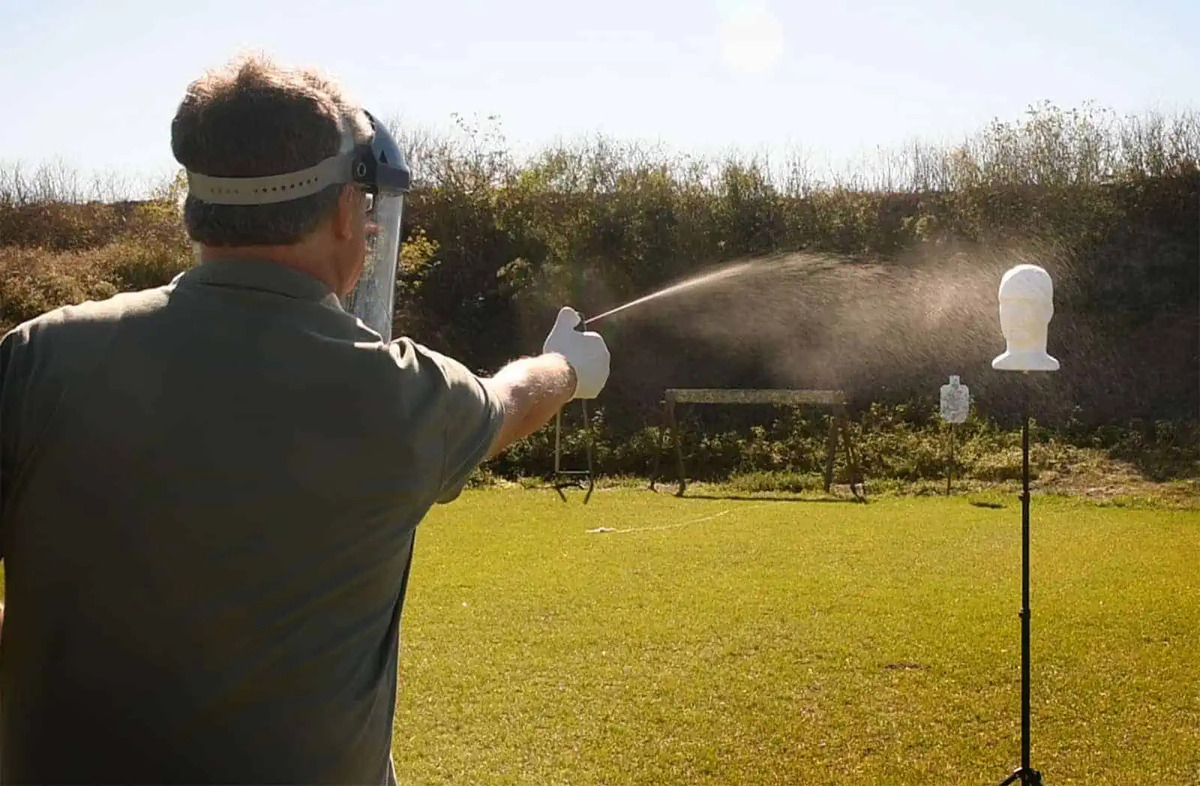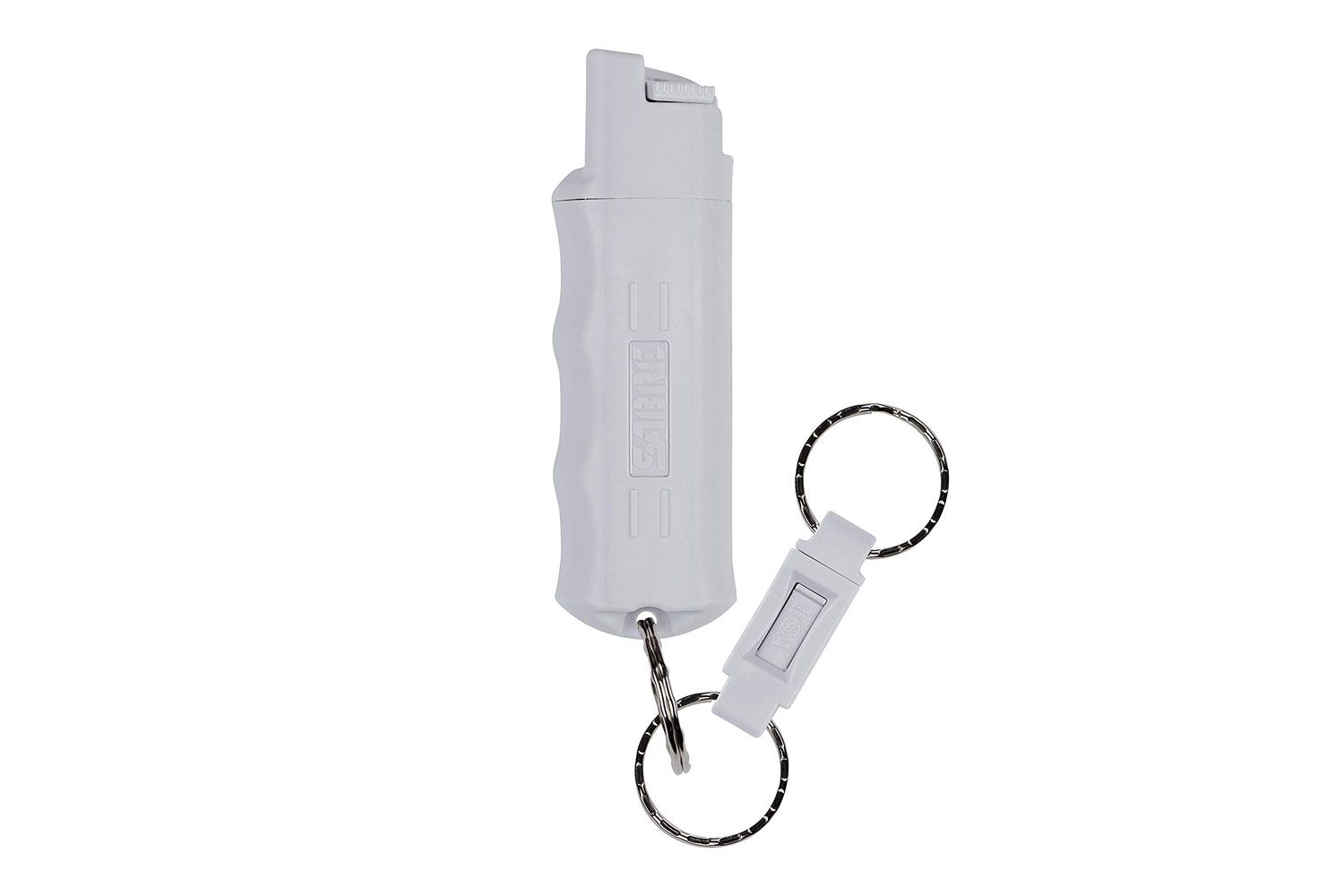Home>Home Security and Surveillance>How Effective Is Pepper Spray For Self-Defense


Home Security and Surveillance
How Effective Is Pepper Spray For Self-Defense
Modified: August 17, 2024
Discover the effectiveness of pepper spray for self-defense and enhance your home security with our top-rated home security and surveillance products. Protect yourself and your loved ones today!
(Many of the links in this article redirect to a specific reviewed product. Your purchase of these products through affiliate links helps to generate commission for Storables.com, at no extra cost. Learn more)
Introduction
Welcome to the world of home security and surveillance! In today’s rapidly changing world, it’s essential to ensure the safety of our loved ones and protect our property. One effective way to achieve this is through the use of pepper spray as a self-defense tool. Pepper spray has gained popularity as a non-lethal option for personal protection and has proven to be highly effective in deterring potential attackers.
Pepper spray, also known as OC spray (oleoresin capsicum spray), is a powerful non-lethal weapon that incapacitates an attacker by causing temporary blindness, pain, and difficulty breathing. It is a convenient and easily accessible tool that provides an extra layer of security for individuals of all ages and backgrounds. Whether you live in a high-crime area, commute regularly, or simply want peace of mind at home, pepper spray can be a game-changer in terms of personal safety.
But how does pepper spray work, and how effective is it in real-life situations? In this article, we will explore the mechanics behind pepper spray, its effectiveness as a self-defense tool, the advantages and limitations associated with its use, and the proper handling and legal considerations to keep in mind.
So, if you’re ready to dive into the world of pepper spray and self-defense, let’s get started!
Key Takeaways:
- Pepper spray is an effective, non-lethal self-defense tool that causes temporary blindness and difficulty breathing, providing an opportunity to escape from potential attackers.
- While pepper spray is easy to use and widely available, it has limitations such as wind direction affecting its effectiveness and legal considerations that users need to be aware of.
What is Pepper Spray?
Pepper spray is a self-defense tool that contains a chemical compound called oleoresin capsicum (OC). This compound is derived from hot peppers, such as cayenne and jalapeno peppers, which are known for their intense heat and strong irritant properties.
The OC in pepper spray works by stimulating the nerve endings in the eyes, nose, throat, and skin, leading to severe irritation and incapacitation. When sprayed directly into the face of an attacker, it causes immediate and intense burning sensations in the eyes, making it difficult for them to see and effectively carry out aggressive actions.
Pepper spray comes in various forms, including aerosol cans, keychain canisters, and even disguised as everyday items like pens or lipstick. The size and design of the canisters make them easy to carry and conceal, offering convenient access to self-defense whenever it is needed.
It’s important to note that pepper spray is non-lethal and designed to temporarily disable the attacker without causing long-term harm. The effects of pepper spray typically last for about 30 minutes, giving the victims enough time to escape or seek help.
Pepper spray is commonly used by law enforcement agencies and civilian individuals alike. It is an effective self-defense tool that can provide a sense of security and empowerment to anyone concerned about personal safety.
Now that we understand what pepper spray is, let’s take a closer look at how it works to incapacitate attackers and deter potential threats.
How Does Pepper Spray Work?
Pepper spray is a highly effective self-defense tool due to its active ingredient, oleoresin capsicum (OC). When sprayed onto an attacker, it triggers a series of physiological responses that incapacitate them, giving the victim an opportunity to escape or seek help.
When the OC in pepper spray comes into contact with the attacker’s eyes, it causes an immediate and intense burning sensation. This is a result of capsaicin, the chemical compound responsible for the hot and spicy sensation in peppers. The capsaicin activates the sensory nerve receptors in the eyes, triggering an involuntary response.
The effects of pepper spray include temporary blindness, excessive tearing, and difficulty opening the eyes. This severely impairs the attacker’s vision, making it nearly impossible for them to continue with their aggressive actions. Furthermore, the intense burning sensation experienced by the attacker causes them to instinctively close their eyes, reducing their ability to navigate and attack effectively.
Aside from affecting the eyes, pepper spray also irritates the respiratory system. When inhaled, the capsaicin particles cause inflammation in the mucous membranes of the nose, throat, and lungs. This leads to coughing, choking, and difficulty breathing, further incapacitating the attacker and rendering them unable to continue their assault.
Additionally, pepper spray can also cause skin irritation and burning when it comes into contact with the attacker’s face and exposed skin. This serves as a deterrent and prevents physical contact, as the attacker will instinctively try to avoid the pain and discomfort caused by the spray.
It’s important to note that the effects of pepper spray are temporary and non-lethal. After the initial 30 minutes or so, the symptoms gradually subside, and the attacker begins to recover. However, during this period, victims have a window of opportunity to escape, seek help, or defend themselves further if needed.
Now that we understand how pepper spray works, let’s explore its effectiveness as a self-defense tool and the advantages it offers.
Effectiveness of Pepper Spray for Self-Defense
Pepper spray has gained significant recognition as an effective self-defense tool for a variety of reasons. Its primary purpose is to incapacitate attackers and create an opportunity for victims to escape or seek help. Let’s explore the effectiveness of pepper spray in more detail:
- Immediate incapacitation: When sprayed directly into an attacker’s face, pepper spray causes intense pain and temporary blindness, disabling their ability to see clearly and continue their assault. This immediate incapacitation gives the victim a vital window of opportunity to escape the danger.
- Easy to use: Pepper spray is simple to use, making it accessible for people of all ages and physical abilities. With just a press of a button or a quick motion, anyone can deploy pepper spray effectively in a time of need.
- Non-lethal option: Unlike firearms or other lethal weapons, pepper spray is non-lethal, reducing the risk of causing permanent harm or fatalities. This makes it a popular choice for individuals who want to defend themselves without resorting to lethal force.
- Affects multiple senses: Pepper spray targets the eyes, respiratory system, and skin, affecting multiple senses simultaneously. This makes it difficult for attackers to overcome the debilitating effects and continue their assault.
- Psychological deterrent: The presence of pepper spray can act as a psychological deterrent, dissuading potential attackers from engaging in harmful behavior. Knowing that their intended victim is armed with pepper spray can make attackers think twice before initiating an assault.
- Effective against multiple attackers: Pepper spray can be effective against multiple attackers, as the spray can disperse and affect multiple individuals within its range.
While pepper spray is generally considered highly effective, it is important to note that its effectiveness can vary depending on various factors. These factors include the type and concentration of the spray, the distance between the victim and the attacker, the wind direction, and the attacker’s tolerance to the effects of pepper spray.
Ultimately, pepper spray can provide victims with a valuable means of self-defense in a range of situations. However, it is crucial to understand its limitations and proper usage for optimum effectiveness, which we will explore in the upcoming sections.
Advantages of Using Pepper Spray for Self-Defense
When it comes to personal safety and self-defense, pepper spray offers several advantages over other methods. Here are some key advantages of using pepper spray:
- Non-lethal option: One of the biggest advantages of pepper spray is that it is a non-lethal self-defense tool. Unlike firearms or other weapons, pepper spray is designed to temporarily incapacitate the attacker without causing permanent harm or loss of life.
- Legal and widely available: Pepper spray is legal in many countries and readily available for purchase. It is a commonly accepted tool for personal protection, making it easily accessible to individuals who wish to enhance their safety.
- Compact and convenient: Pepper spray comes in various sizes and designs, making it convenient to carry and conceal. It can be easily attached to keychains, carried in a pocket or purse, or even disguised as an everyday item like a pen or lipstick. This compact design ensures that pepper spray is readily accessible whenever needed.
- Effective at a distance: Pepper spray allows victims to defend themselves from a safe distance, typically ranging from 6 to 15 feet depending on the type of spray. This provides a valuable advantage, giving victims the ability to ward off attackers before they can physically harm them.
- Easy to use and intuitive: Pepper spray does not require extensive training or physical strength to use effectively. With a simple press of a button or a quick motion, anyone can deploy pepper spray in a moment of need. Its intuitive design ensures that individuals can react quickly and effectively to potential threats.
- Immediate effect: Pepper spray works almost instantaneously upon contact with the attacker, causing intense pain, temporary blindness, and difficulty breathing. This immediate effect can startle and disorient the assailant, giving the victim crucial time to escape or seek help.
These advantages make pepper spray a popular choice for individuals seeking a reliable and practical self-defense option. However, it is important to acknowledge the limitations and responsible use of pepper spray, which we will discuss in the upcoming sections.
When using pepper spray for self-defense, aim for the attacker’s face and eyes, and then quickly move away to a safe location. Always be aware of wind direction to avoid getting affected by the spray yourself.
Read more: How To Store Pepper Spray
Limitations of Pepper Spray for Self-Defense
While pepper spray is an effective self-defense tool, it is essential to be aware of its limitations. Understanding these limitations can help users make informed decisions about their personal safety. Here are some key limitations of pepper spray for self-defense:
- Ineffective against certain substances: Pepper spray may be less effective against individuals who are under the influence of drugs or alcohol, as they may have a higher tolerance to its effects. Additionally, individuals wearing glasses or other eye protection may experience reduced effectiveness.
- Range and accuracy: Pepper spray has a limited range, typically between 6 to 15 feet depending on the type of spray. This means that users must be within close proximity to the attacker for it to be effective. In high-stress situations, it may be challenging to accurately aim the spray, potentially reducing its effectiveness.
- Wind and environmental factors: Wind direction can impact the effectiveness of pepper spray. If sprayed against strong winds, the spray can disperse, reducing its concentration and effectiveness. Environmental factors such as rain or extreme temperatures can also affect the potency of the spray.
- Limited number of uses: Most pepper spray canisters have a limited number of uses before they need to be replaced. It’s crucial to regularly check the expiration date and replace the canister when necessary to ensure optimal effectiveness.
- Possibility of blowback: If used in close quarters, there is a risk of blowback, where the spray can affect the user as well. It is essential to practice proper technique and be aware of the potential for blowback in such situations.
- Psychological preparedness: While pepper spray can be a valuable tool for self-defense, it is important to remember that pepper spray alone may not guarantee complete safety. Users should also be mentally and physically prepared to assess situations, make quick decisions, and take additional actions if necessary.
Despite these limitations, pepper spray remains a widely used and effective self-defense option. It is important to understand and acknowledge these limitations while also considering other factors such as personal comfort, legal regulations, and individual circumstances when choosing a self-defense tool.
Proper Use and Handling of Pepper Spray
To ensure the effectiveness and safety of pepper spray as a self-defense tool, proper use and handling are essential. Here are some guidelines to follow when using pepper spray:
- Familiarize yourself with the product: Read the instructions provided by the manufacturer and familiarize yourself with the specific type of pepper spray you are using. Understand its range, spray pattern, and any additional features it may have.
- Practice proper grip and aim: Hold the pepper spray canister with a firm grip, ensuring that your thumb is securely placed on the nozzle. Aim for the attacker’s face, specifically the eyes and nose, to maximize its effectiveness. Practice your aim in a safe and controlled environment to build confidence and accuracy.
- Be aware of wind direction: Before deploying pepper spray, consider the direction of the wind. Position yourself so that the wind is at your back or to the side, reducing the likelihood of spray blowback affecting you.
- Keep a safe distance: Maintain a safe distance from the attacker when using pepper spray, typically around 6 to 15 feet depending on the spray’s range. This ensures that you are out of the attacker’s immediate reach while still being able to effectively incapacitate them.
- Short bursts and controlled spraying: It is recommended to administer short bursts of pepper spray rather than a continuous stream. This helps conserve the spray and ensures controlled and accurate application.
- Move away and seek help: After deploying pepper spray, quickly move away from the attacker, keeping a safe distance. Call for help or seek assistance from authorities or nearby individuals as soon as possible.
- Practice situational awareness: Pepper spray is just one tool among many for self-defense. It’s important to be aware of your surroundings, identify potential threats, and take precautionary measures to stay safe.
- Regular maintenance and replacement: Check the expiration date of your pepper spray canister regularly and replace it when necessary. Over time, pepper spray can lose its potency, so it is important to maintain a fresh and effective product.
Remember, pepper spray should only be used in situations where there is a genuine threat to your safety or the safety of others. It is crucial to act responsibly and within the legal boundaries of your jurisdiction when using pepper spray for self-defense.
By following these guidelines and practicing proper use and handling techniques, you can maximize the effectiveness of pepper spray as a self-defense tool and enhance your personal safety.
Legal Considerations and Restrictions
While pepper spray is legal in many countries and states, there are legal considerations and restrictions that vary depending on your jurisdiction. It is important to familiarize yourself with the local laws and regulations regarding the possession and use of pepper spray. Here are some key legal considerations to keep in mind:
- Legal age requirement: Most jurisdictions have a minimum age requirement for the possession and purchase of pepper spray. Ensure that you meet the legal age requirement before obtaining pepper spray.
- Restrictions on carrying: Some areas may have restrictions on where and how you can carry pepper spray. For example, certain locations, such as schools or government buildings, may prohibit the possession of pepper spray on their premises. Additionally, some jurisdictions may require a permit or license to carry pepper spray.
- Restrictions on size and concentration: Certain jurisdictions may have restrictions on the size of pepper spray canisters or the concentration of the active ingredient. It is important to adhere to these restrictions to comply with local laws.
- Travel restrictions: If you are traveling internationally or across state lines, be aware that the legality and restrictions on pepper spray may vary. Check the laws of your destination to ensure compliance with local regulations.
- Prohibited uses: The use of pepper spray in certain circumstances may be considered illegal or prohibited. It is important to understand the allowed uses of pepper spray for self-defense and avoid using it in situations that may be considered unlawful.
- Legal consequences: Misuse or inappropriate use of pepper spray can lead to legal consequences. It is important to use pepper spray responsibly and within the bounds of the law to avoid potential legal issues.
Remember, laws and regulations regarding pepper spray can change, so it is crucial to stay informed about the latest updates and any changes in your local area. Consult with local authorities or legal professionals if you have any questions or concerns regarding the legality of pepper spray in your jurisdiction.
Understanding and abiding by the legal considerations and restrictions ensures that you use pepper spray responsibly and within the confines of the law, enhancing your personal safety without running afoul of legal consequences.
Other Alternatives for Self-Defense
While pepper spray is a popular and effective self-defense tool, it is important to explore other alternatives that may suit your personal preferences and circumstances. Here are some other options to consider:
- Personal alarms: Personal alarms emit a loud sound when activated, drawing attention to your situation and potentially deterring attackers. These small and portable devices are easy to carry and can provide an added layer of safety.
- Self-defense classes: Participating in self-defense classes can empower you with the knowledge and skills to protect yourself in different situations. These classes can teach you techniques to evade or subdue attackers using your body’s natural abilities.
- Stun guns: Stun guns are handheld devices that deliver an electric shock to an attacker, temporarily incapacitating them. They work by disrupting the electronic signals in the attacker’s body, causing disorientation and loss of muscle control.
- Tactical flashlights: Tactical flashlights are designed with features such as high-intensity beams and durable construction, making them suitable for self-defense. They can temporarily blind an attacker and provide a means of identifying potential threats in low-light situations.
- Whistles: Whistles are simple, affordable, and effective tools for self-defense. Emitting a loud and piercing sound can attract attention and potentially scare off attackers. Carrying a whistle on your keychain or in your pocket can provide a quick and accessible means of drawing attention to your situation.
- Self-awareness and avoidance: One of the most powerful tools for self-defense is self-awareness and avoidance. By being mindful of your surroundings, trusting your instincts, and avoiding potentially dangerous situations, you can minimize the risk of encountering threats in the first place.
It is important to note that each self-defense option has its advantages and limitations. Consider your personal comfort level, legal restrictions, and the specific circumstances in which you anticipate needing self-defense. Combining multiple self-defense strategies can provide comprehensive protection and flexibility in different scenarios.
When exploring these alternatives, proper training, practice, and knowledge are key to ensuring their effectiveness. Consider seeking professional guidance or attending self-defense workshops to gain insights and enhance your skills.
Remember, the goal of self-defense is to protect yourself and escape from danger. Choose the method or combination of methods that align with your personal values, comfort level, and legal considerations to enhance your personal safety.
Read more: What Is Pepper Spray
Conclusion
In a world where personal safety is a top priority, pepper spray has emerged as a highly effective and widely accessible self-defense tool. Its ability to incapacitate attackers temporarily and create opportunities for escape or help has made it a popular choice for individuals of all backgrounds and ages.
Through this article, we have explored the mechanics behind pepper spray, its effectiveness in self-defense situations, the advantages it offers, and its limitations. We have also discussed the proper use, legal considerations, and alternative options for personal protection.
Pepper spray provides users with an immediate, non-lethal means of defending themselves against potential threats. Its compact design, easy accessibility, and simplicity of use make it a practical self-defense tool, even for those without extensive physical training.
However, it is crucial to understand and acknowledge the limitations of pepper spray. Factors such as wind direction, an attacker’s tolerance, and range are among the considerations to keep in mind. It is also important to be aware of the legal regulations governing the possession and use of pepper spray in your jurisdiction.
Remember, pepper spray should be seen as one element of a comprehensive self-defense strategy. Practicing situational awareness, investing in personal safety training, and exploring other alternatives can further enhance your overall ability to protect yourself.
In the end, choosing the right self-defense method is a personal decision that depends on your comfort level, legal obligations, and unique circumstances. Consider your needs and preferences, educate yourself on the various options available, and practice responsible use to ensure your safety.
Ultimately, with proper knowledge, training, and adherence to legal considerations, pepper spray can be a valuable tool in your arsenal, empowering you to take proactive steps towards personal security and peace of mind.
Frequently Asked Questions about How Effective Is Pepper Spray For Self-Defense
Was this page helpful?
At Storables.com, we guarantee accurate and reliable information. Our content, validated by Expert Board Contributors, is crafted following stringent Editorial Policies. We're committed to providing you with well-researched, expert-backed insights for all your informational needs.
